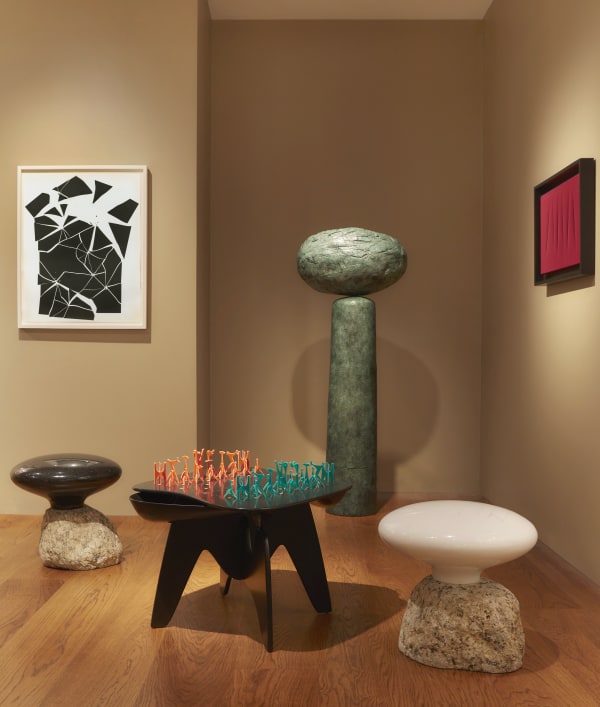Sélavy by Di Donna is pleased to present Rock/Paper/Scissors, an original salon at Di Donna Galleries in New York, curated in collaboration with Steven Learner, architect and founder of Collective Design fair. The presentation will be on view from November 9, 2023 through January 19, 2024 and includes selected examples of fine art and design objects that evoke the whimsical nature of Rock, Paper, Scissors.
Inspired by the popular hand game, this curated salon is unified by a narrative surrounding the primary media of stone, paper, and metal. The assembled objects emphasize their respective materiality and celebrate the playful, often intricate artistic techniques employed in their creation — including paper collage, carved stone, and manipulated metal fabrications. The show includes works from artists such as: Ian Collings, Byung Hoon Choi, Saloua Raouda Choucair, Alma Allen, Jean (Hans) Arp, Sebastian Brajkovic, Andrea Branzi, Alexander Calder, Irene Cattaneo, Tara Donovan, Jean Dubuffet, Carol Egan, Lucio Fontana, Frank Gehry, Rogan Gregory, Keith Haring, Hechizoo, David Hockney, Yayoi Kusama, Alicja Kwade, Sol LeWitt, Henry Moore, Isamu Noguchi, Nuvolo, Claes Oldenburg, Rick Owens, Man Ray, George Rickey, Ed Ruscha, Robert Stadler, Faye Toogood, William Turnbull, Victor Vasarely, Line Vautrin, Andy Warhol and Chen Chen & Kai Williams.
For his first curatorial collaboration with Sélavy, Learner has designed an evocative domestic setting within Di Donna’s gallery space that leans into the sense of play engendered by Rock, Paper, Scissors. The objects are arranged in imaginative vignettes that accentuate dynamic conversations. Throughout the gallery, Learner explores how artists embrace or challenge the physical nature of their chosen materials to either enhance or subvert appearance and perception.
Rock / Paper / Scissors is now closed. For inquiries, please contact us at bonjour@selavy.com.
744 MADISON AVENUE
NEW YORK, NY 10065
VIEW THE PRESS RELEASE










